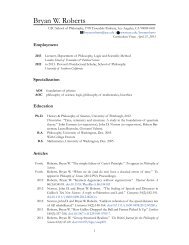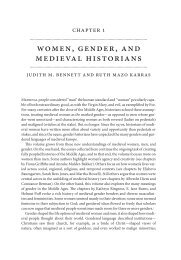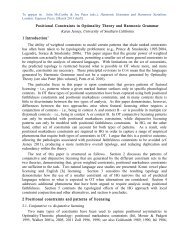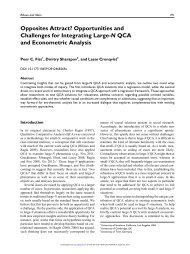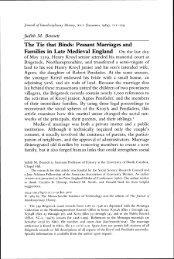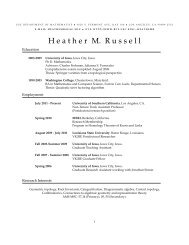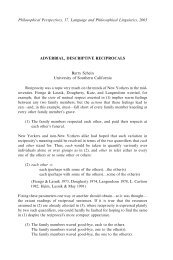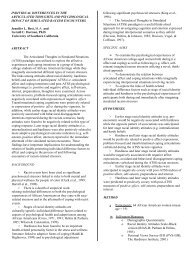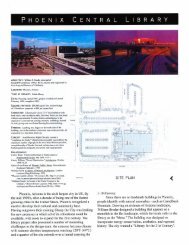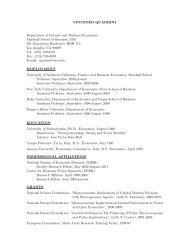Shieva Kleinschmidt [This version differs from the Phil Studies ... - Usc
Shieva Kleinschmidt [This version differs from the Phil Studies ... - Usc
Shieva Kleinschmidt [This version differs from the Phil Studies ... - Usc
Create successful ePaper yourself
Turn your PDF publications into a flip-book with our unique Google optimized e-Paper software.
have colocation. Burke’s way of explaining away <strong>the</strong> counterintuitiveness of his view<br />
does not work for our analogue view, which remains immensely counterintuitive.<br />
The most plausible rejection of premise 7 seems to be this: water just is atom-<br />
constituting stuff that has certain properties, 25 such as <strong>the</strong> property of constituting things<br />
that bear certain relations to one ano<strong>the</strong>r (or having subportions that constitute those<br />
things). <strong>This</strong> response seems intuitive and plausible, but <strong>the</strong>re are two worries. First, it’s<br />
not clear how we should deal with <strong>the</strong> apparent difference in modal properties between<br />
<strong>the</strong> atom-constituting stuff and <strong>the</strong> water. Second, it leaves us with an odd result: no<br />
matter how small a portion of stuff is, its size alone is not enough to preclude its being<br />
water. That is, for any time that <strong>the</strong> water exists, since it is identical with atom-<br />
constituting stuff which has certain properties, at that time each atom is constituted by<br />
water. So an oxygen atom would be constituted by water, which is identical to H2O!<br />
However, this consequence is not so counterintuitive when we remember that it is not<br />
water in virtue of <strong>the</strong> portion’s being constituted by H2O molecules (which it isn’t).<br />
In response to <strong>the</strong> second worry, those wanting to avoid colocated portions of<br />
stuff could also say instead: water is atom-constituting stuff that is entirely divisible into<br />
subportions (proper or improper) that constitute certain things (H2O molecules). <strong>This</strong><br />
view avoids <strong>the</strong> odd result that oxygen atoms can be constituted by water, because <strong>the</strong>re’s<br />
a “minimum size” requirement for <strong>the</strong> portions to be water. But this has <strong>the</strong> result that<br />
any portion of water is entirely divisible into subportions that are not water. <strong>This</strong> is not<br />
threatening to <strong>the</strong> view, however, because even though every sum of two portions of stuff<br />
kind K is a portion of stuff kind K, it is not <strong>the</strong> case that for any property φ that two<br />
portions of stuff have, <strong>the</strong> sum of those portions of stuff also has φ. So, one could<br />
plausibly deny that “stuff that isn’t water” denotes a natural kind to which <strong>the</strong> sums<br />
principle would apply. But even if this were right, it wouldn’t be <strong>the</strong> case that this stuff<br />
kind would have <strong>the</strong> property of not being water essentially. 26<br />
25 <strong>This</strong> alternative view was suggested by Ned Markosian in conversation. An anonymous referee made <strong>the</strong><br />
following observation: if one accepts <strong>the</strong> identity of atom-constituting stuff and water (or of analogous<br />
pairs of stuff kinds), <strong>the</strong>y cannot accept <strong>the</strong> view that things can constitute stuff as well as stuff constituting<br />
things without giving up <strong>the</strong> claim that two entities can’t constitute one ano<strong>the</strong>r (that is, saying constitution<br />
can be symmetrical).<br />
26 There’s also an interesting question (brought to my attention by an anonymous referee) of where <strong>the</strong><br />
water is located on this view. The referee pointed out that one can say that, though <strong>the</strong>re’s no water in any<br />
single atom (that is, <strong>the</strong>re’s no water such that all of its subportions are in a single atom), <strong>the</strong> water is<br />
located at <strong>the</strong> same regions <strong>the</strong> atoms are located at. To use Josh Parsons’ terminology (Parsons, “Theories



